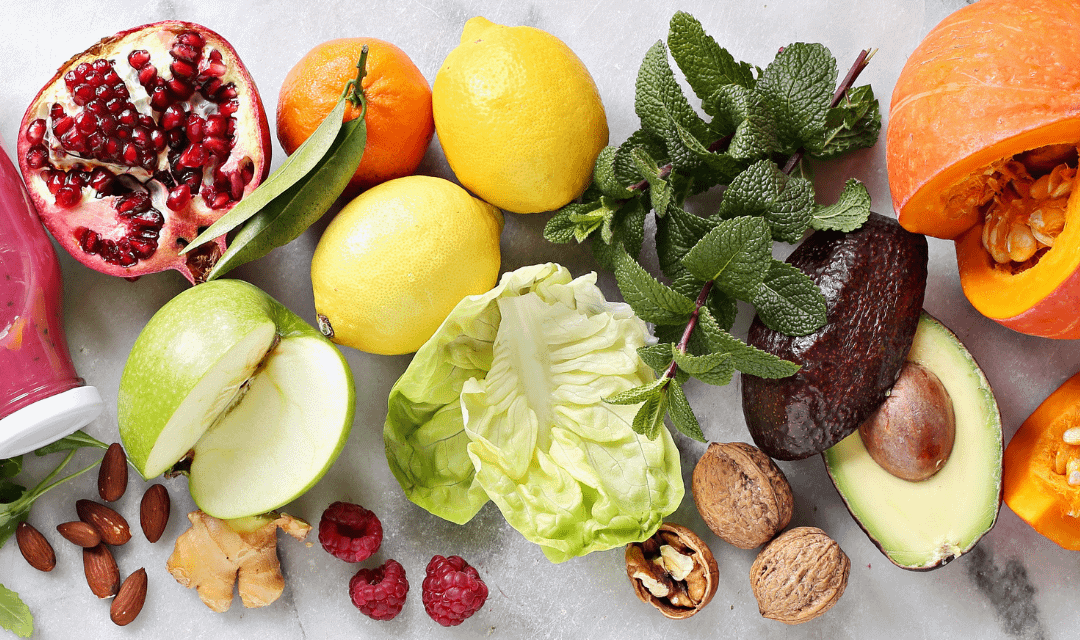9 Natural Remedies: Traditional Wisdom, Scientific Proof
Imagine a world where plants play dress-up to reveal their healing powers…
Welcome to the Doctrine of Signatures – the original “judge a book by its cover” of the medical world! This quirky concept suggests that Mother Nature, in her infinite wisdom, designed plants to visually hint at their medicinal uses.
The Doctrine of Signatures is a fascinating concept in the history of medicine and herbalism. This idea proposes that plants bear visual clues to their therapeutic uses, often resembling the body parts or diseases they are meant to treat. While its roots can be traced back to ancient thinkers like the Roman philosopher Pliny and the Greek physician Dioscorides, it was Paracelsus (1493 – 1591), a Swiss physician and alchemist who truly expanded upon this concept. The doctrine gained significant traction in Western thought, particularly during the 16th and 17th centuries, and its influence continued for centuries afterward.
Interestingly the modern science has found some surprising correlations. Let’s dive into 9 plant foods that prove sometimes you can judge a book by its cover, or in this case, a plant by its shape.
So let’s explore how modern know-how and ancient wisdom can team up to help you feel your best. Trust us, it’s going to be quite the adventure!

If you’ve ever cracked open a walnut and thought “Huh, that looks like a tiny brain,” congratulations! You are not losing your marbles – you are onto something. These wrinkly wonders are packed with omega-3 fatty acids, particularly alpha-linolenic acid. It’s like brain food for your actual brain, supporting cognitive function and potentially keeping Alzheimer’s at bay. So next time you are snacking on walnuts, remember you are literally feeding your brain!
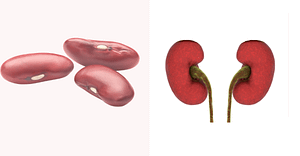
Shaped like miniature kidneys, these legumes were once prescribed for – you guessed it! – kidney issues. While they are not exactly a miracle cure, kidney beans do contain molybdenum, a mineral that helps your kidneys filter waste more efficiently. It’s like giving your internal plumbing system a gentle, bean-shaped boost.
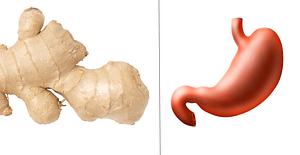
With its knobby protrusions resembling a bloated tummy, ginger was the go-to for digestive woes. Modern science confirms that compounds like gingerol can indeed soothe an upset stomach. It’s nature’s way of saying, “Feeling queasy? Let’s spice things up!”
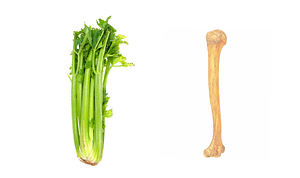
Standing tall and rigid like a tiny green skeleton, celery was once recommended for bone health. Surprisingly, this wasn’t just a case of wishful thinking. Celery is rich in silicon, a mineral crucial for bone formation. It is also rich in antioxidants, which combat inflammation, potentially easing arthritic pain. Who knew this crunchy snack was secretly a superhero for your skeleton?
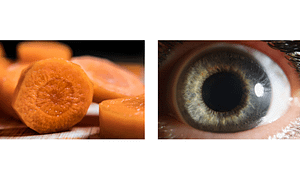
The carrot’s cross-section bears an uncanny resemblance to the human eye, complete with pupil-like core and iris-like rings. This visual similarity led ancient healers to prescribe carrots for eye health. Lo and behold, carrots are indeed packed with vitamin A and other compounds essential for vision. It’s as if nature was winking at us all along!
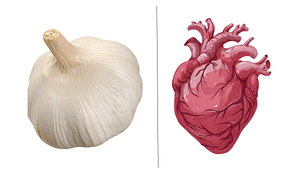
Some creative thinkers saw garlic’s layered structure as a mini model of the heart. While the comparison might seem a stretch, garlic has indeed proven to be a cardiovascular superstar. Its sulphur compounds can help lower blood pressure and reduce plaque buildup in arteries. It’s like nature’s way of saying, “Love your heart, even if it gives you garlic breath.”

Speaking of nature’s subtle hints, the avocado might just be its cheekiest one yet. This pear-shaped fruit, when halved and with its pit removed, bears an uncanny resemblance to a woman’s uterus. According to the Doctrine of Signatures, this visual similarity suggested avocados could benefit reproductive health.
Interestingly, modern science has found some truth to this ancient wisdom. Avocados are rich in folate (B9 vitamin), which is crucial for foetal development and preventing birth defects. Half of an avocado provides about 23% of the daily recommended folate intake for pregnant women.
But that’s not all! Avocados are also packed with healthy monounsaturated fats, which are essential for hormone production and balance. These fats can help regulate estrogen levels, potentially aiding fertility and easing symptoms of menopause.
Avocados also contain potassium, which has been linked to reducing the risk of hypertensive disorders during pregnancy. They are also a good source of fibre, which can help prevent gestational diabetes.
So, while avocados won’t magically make you pregnant (sorry, guacamole enthusiasts!), they do offer a range of nutrients beneficial for reproductive health. It’s as if Mother Nature designed a perfectly packaged prenatal vitamin – and made it delicious enough to spread on toast!
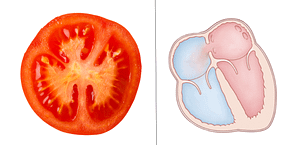
Slice open a tomato and you’ll find a structure eerily similar to the human heart, complete with chambers that mirror our cardiac anatomy. This resemblance led signature theorists to believe tomatoes could benefit heart health.
As it turns out, they were onto something. Tomatoes are rich in lycopene, a potent antioxidant that gives them their vibrant red colour. Studies have shown that lycopene can help lower the risk of heart disease by reducing LDL (bad) cholesterol and increasing HDL (good) cholesterol. It also helps prevent the oxidation of lipids, which can lead to arterial plaque formation.
Moreover, tomatoes are an excellent source of potassium, which helps regulate blood pressure. They also contain vitamin C and beta-carotene, both of which support overall cardiovascular health.
So, next time you are chopping tomatoes for your salad, remember you are not just preparing a meal – you are showing your heart some love.
So, while avocados won’t magically make you pregnant (sorry, guacamole enthusiasts!), they do offer a range of nutrients beneficial for reproductive health. It’s as if Mother Nature designed a perfectly packaged prenatal vitamin – and made it delicious enough to spread on toast!
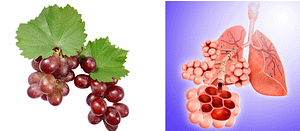
Bunches of grapes, with their clustered structure and branching stems, bear a striking resemblance to the alveoli of the lungs. This similarity led traditional healers to prescribe grapes for respiratory health.
Modern research has found some merit to this connection. Grapes, especially red and purple varieties, are rich in a compound called resveratrol. This powerful antioxidant has been shown to have anti-inflammatory properties that may benefit lung function. Some studies suggest that resveratrol could help protect against lung cancer and chronic obstructive pulmonary disease (COPD).
In addition, the high vitamin C content in grapes supports overall immune function, which is crucial for respiratory health.
Interestingly, grape seed extract has shown promise in reducing the severity of asthma symptoms in some studies. It’s as if these tiny fruits are nature’s way of saying: “Take a deep breath and enjoy!”
So, there you have it – nine examples of plants playing dress-up as body parts, and surprisingly getting it right. While we can’t always trust appearances (I’m looking at you, deceivingly healthy-looking muffins), these plant-based doubles remind us that sometimes, nature really does know best!
Til next time, here’s to your health – naturally! 🌿
